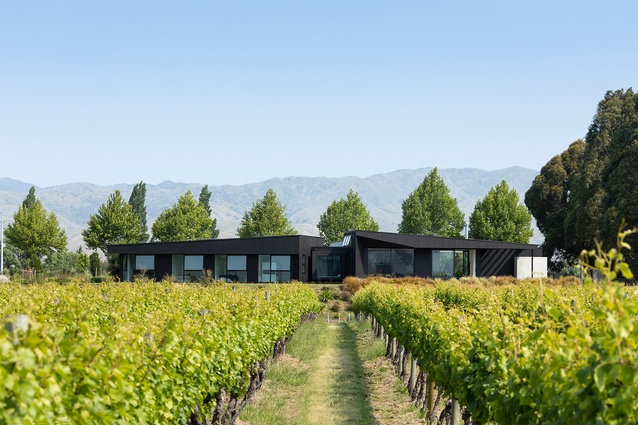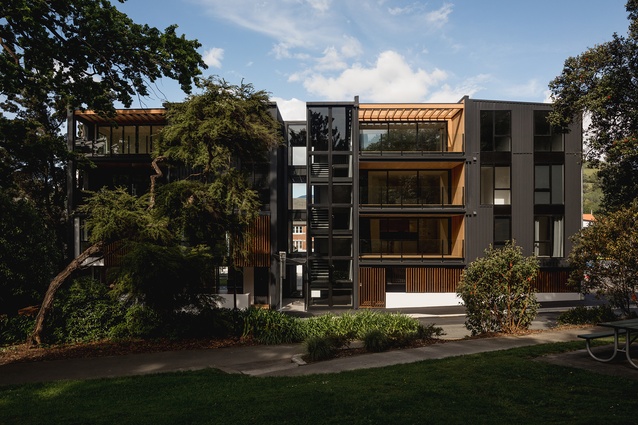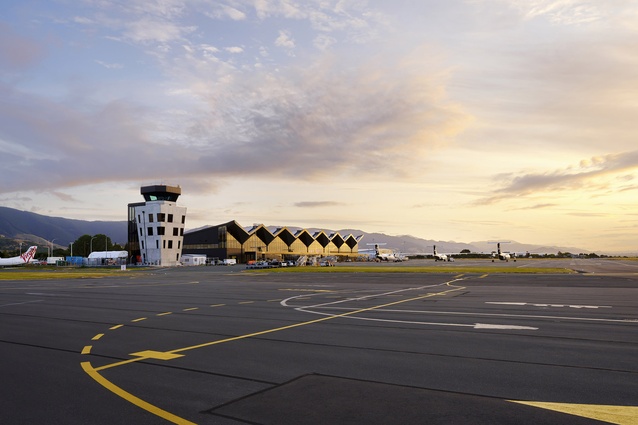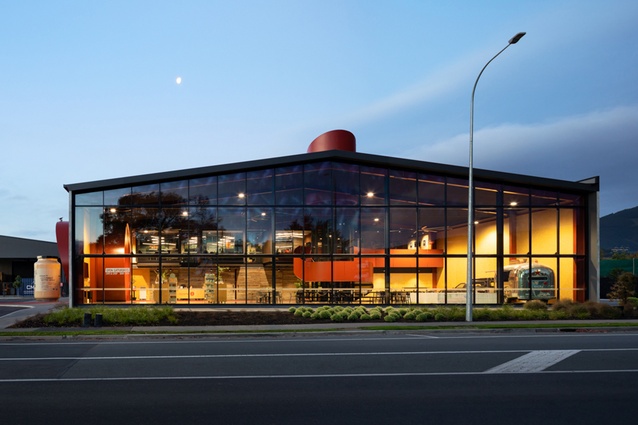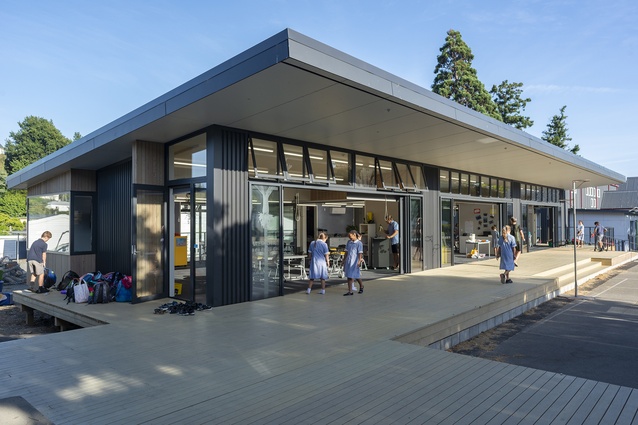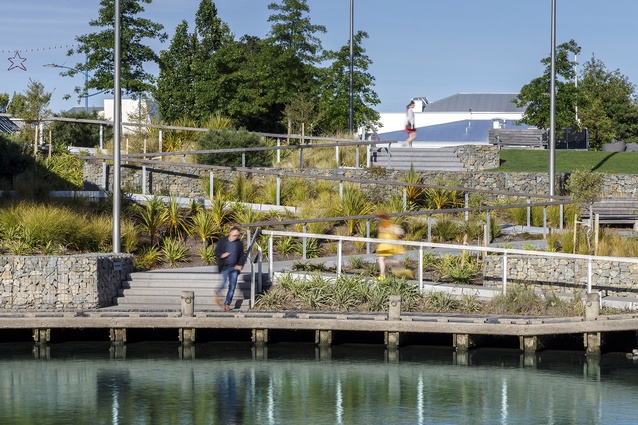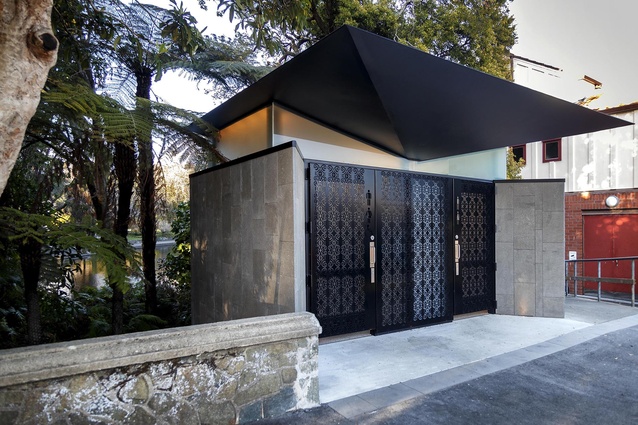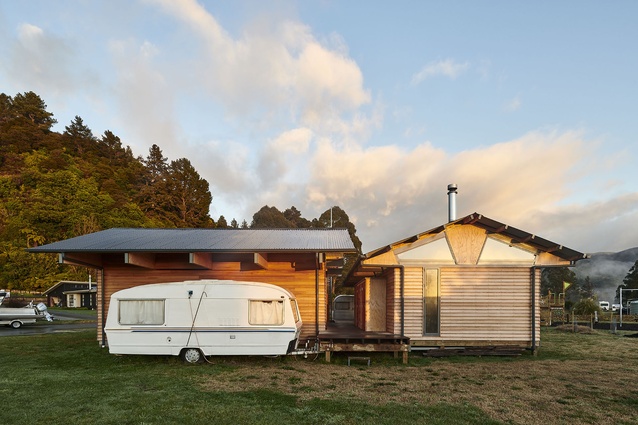Winners revealed: 2020 Nelson/Marlborough Architecture Awards
Eleven winners have been named in the 2020 Nelson/Marlborough region of the Te Kāhui Whaihanga New Zealand Institute of Architects (NZIA) Local Awards, including an apartment complex, an airport and a whimsical food factory.
The winning projects were selected by a jury led by Nelson architect Andrew Irving, who was joined by fellow Nelson architect Ian Bowman, Hamilton architect Brian White, and Olivia Hall, Head of the Māori Department at Nelson Marlborough Institute of Technology.
Irving was encouraged by the sustainability and smaller scale of this year’s entrants. “The scale of projects entered in the housing category seemed more compact than in past years,” he said. “Perhaps this signals a trend toward smaller and more considered houses.” Of the commercial entries, Irving noted, “Hopefully, this indicates a move towards mainstream acceptance of environmentally responsible material choices, and in favour of locally produced resources.”
Read the jury citations for all winners below:
Housing
Axe House by architecture+

An extrusion of a familiar cabin form, this house occupies a narrow site carved from the surrounding vineyard. The elongated plan allows views through the house and along the vines; in contrast, the raised floor level ensures transverse views that engage with the landscape beyond. The simple external form is an expression of disciplined material selection, coupled with rigorous detailing; subtly shaped cuts in this form create sheltered outdoor spaces and capture views. Restrained interior spaces are relieved by telling detail at points of view and transition to provide notable moments within a calmly expressed home.
Kaiteriteri Family Bach by redbox architects 2017

The house presents a closed face to the street, concealing what lies within, but entry reveals crafted living spaces, with flanking bedroom wings spreading out to include the adjacent wetland within a generous outdoor area. Prefabricated structural elements were incorporated throughout to facilitate a tight construction programme, and sliding openings and articulated louvres allow interior spaces to be naturally ventilated and daylighting controlled. Careful planning allows for a summertime crowd, accommodated in a delightfully detailed bunkroom or plug-in camper vans. Accessed by a glazed ‘drawbridge’, the master-suite offers a resort-style retreat from the more communal living and sleeping wings.
Vineyard House by Arthouse Architects

The two wings of this farmhouse pivot around a concealed central entry. Bedrooms are accommodated in a simple low-slung form to the east, allowing light and ready access to views and the landscape. The living wing, which is more complex, steps to encompass two integral outdoor areas, shaped to acknowledge the passage of the sun and to offer protection from prevailing winds. Inside the house, robust concrete elements are softened by crafted oak joinery, creating a warm and welcoming family space. Care in design and a high level of craftsmanship are evident in the sculpted cedar cladding, cleverly shaped to admit and exclude the sun.
Housing Multi-unit
Betts Apartments by Arthouse Architecture

Betts Apartments is the first large-scale residential development in central Nelson. A protective southern elevation, pushed to the street edge, coupled with concealed basement carparking, frees the centre of the site to provide a private open space for residents. Viewed from this space, structure, texture, and materials combine artfully to form a series of coherent elevations. Protected balconies are integrated with the north and western façades to increase living areas and maximise sun and aspect. In particular, the architects have taken good advantage of opportunities to gain views to the city and the green spaces of Pikimai (Church Hill).
Commercial Architecture
Nelson Airport Terminal by Studio Pacific Architecture

The roof forms of Nelson Airport, shaped to reflect the adjacent mountain ranges, signal this important gateway to the Nelson region. Articulated timber structures and surfaces provide warmth and familiarity to a highly resolved single volume. Open to the east and west, the terminal both contains and reveals the complexity of airport operations. The building successfully integrates innovative timber structural and seismic design, prefabrication technology, climate resilience and environmental systems. The resulting architecture serves as an important showcase for the potential of these design elements in the public and commercial realms.
Pic’s Peanut Butter Factory by Jerram Tocker Barron Architects
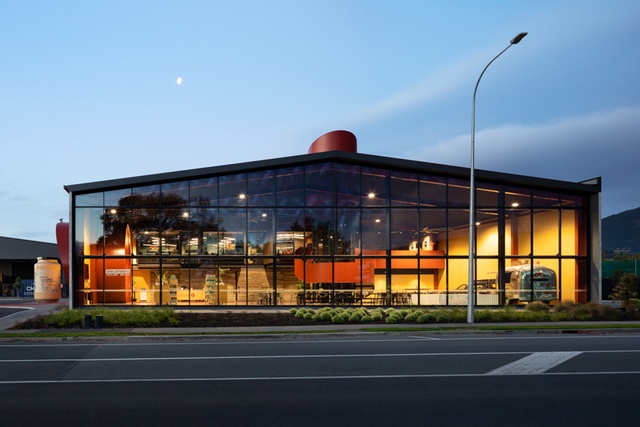
The architects have boldly adapted a familiar building form to radically re-cast a factory and warehouse and provide an engaging visitor experience. The prosaic functions of factory production, and storage, staff and office spaces, are integrated in a well-handled back-of-house. Visitors are met ‘out front’ and then guided, step by step, through the processes of peanut butter production. A crisply detailed glazed front wall opens the building to the street, while a series of deft insertions of colour and detail at entry, together with skylights and an elevator, add a sense of the Dahlesque to the whole composition.
Resene Colour Award
A generous palette of colour, and complementary materials, guide the user’s experience of the building. The pathway through the factory is highlighted in bold red, and the well-considered use of light and dark, compression and expansion, embellishes the route, encouraging movement as well as signalling points at which visitors may linger on their journey.
Education
St Joseph’s School, Nelson – New Classroom Block by Create Architects
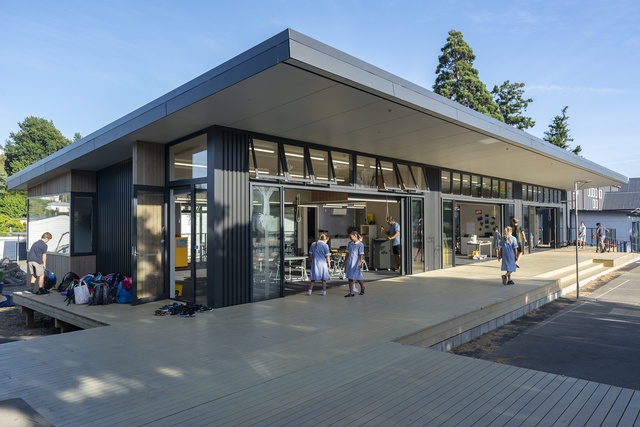
Carefully sited to complete the western side of a central quadrangle, this building gives a contemporary edge to the pivotal open space at the heart of the campus of St Joseph’s School. Broad overhangs shield extensive glazing and provide sheltered outdoor space for learning and play. In a light and open counterpoint to the adjacent more traditional school buildings, operable doors allow free movement from within to without. Well-detailed internal spaces, with beneficial natural lighting and acoustics, provide flexible and highly appropriate learning environments.
Public Architecture
Saltwater Creek Bridge by Jerram Tocker Barron Architects

A worthy addition to Nelson’s developing Mahitahi Walkway, Saltwater Creek bridge is an important connection between city and port. Subtle shaping of the curving timber exo-skeleton, with integrated detailing and lighting, creates an evocative form appropriate to this high-profile location. Conceived as a timber structure, the bridge replaces a more conventional steel and concrete predecessor. Careful consideration has been given to durability and seismic resilience in this project which serves as a test case for timber use in small public works.
The Quays by Studio Pacific Architecture

The Quays is a new public space that supports a series of formal and informal functions and provides navigable access at the change in elevation from Blenheim’s town centre to the Taylor River. Alluding to the site’s former function as a pier, the design integrates robust public furniture and carefully selected and thoughtfully combined surfaces. This landscape-led development acts as a first stage in the formation of a new heart for central Blenheim, providing a focus for the proposed new library and gallery, and re-establishing the river edge’s historical use as a cultural, social, and economic hub.
Small Project Architecture
Queens Garden Toilet Block by Jerram Tocker Barron Architects
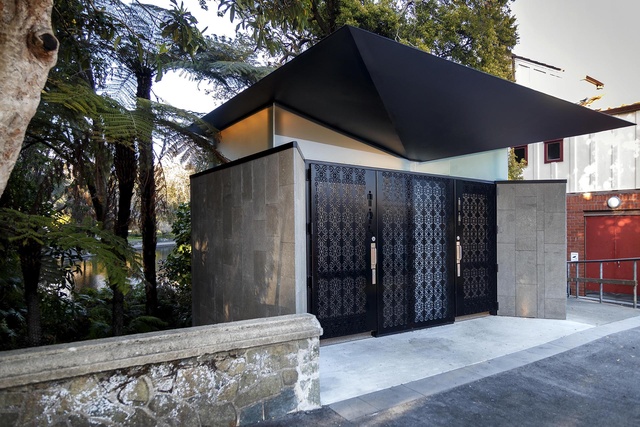
A small structure with a lot to do, this building successfully navigates the space between public building and public convenience, forming a new gateway to Queens Gardens. A rigorous design solution allows this structure to sit among a grove of protected trees. The architects’ integrated approach to form-making and material selection has resulted in a crisply expressed pavilion, connected visually and materially to the nearby Suter Gallery.
Picot Bach by Mitchell Stout Dodd Architects

More beachside campground than bach, this project is a collection of small objects: cabin; sleepout; caravan; deck; boatshed; shower; and tower. The careful arrangement of these objects and the spaces between them has produced a perfect getaway for two, that readily adapts to welcome (much) larger gatherings. Craftsmanship abounds in the assembly of the locally sourced materials that form this building, allowing it to touch its site lightly – a simple act of generosity in this coastal village.
The NZIA Local Awards programme has been supported by Resene for the last 30 years.



